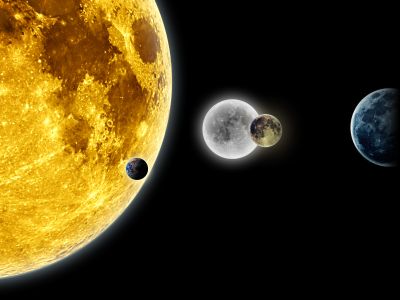It turns out that about 70% of meteorites found on Earth come from 'three impacts' that occurred in the asteroid belt

Meteorites of various sizes have been found on Earth, but only about 6% of the meteorites have been identified as their original celestial bodies. A new study led by researchers from
Young asteroid families as the primary source of meteorites | Nature
https://www.nature.com/articles/s41586-024-08006-7

The Massalia asteroid family as the origin of ordinary L chondrites | Nature
https://www.nature.com/articles/s41586-024-08007-6
We Finally Know Where Most Meteorites on Earth Actually Came From : ScienceAlert
https://www.sciencealert.com/we-finally-know-where-most-meteorites-on-earth-actually-came-from
We've Found the Source of Most Meteorites - Sky & Telescope - Sky & Telescope
https://skyandtelescope.org/astronomy-news/weve-found-the-source-of-most-meteorites/
There are many different types of celestial bodies in the universe, but most meteorites found on Earth are of the type called ' chondrites ,' which have spherical particles called chondrules . About 40% of all meteorites are H-type ordinary chondrites , which have a high iron content, and about 35% are L-type ordinary chondrites, which have a relatively low iron content. If other types are included, chondrites account for more than 80% of all meteorites.
In addition, cosmic ray exposure dating , which measures the amount of cosmic rays that meteorites were exposed to before they fell to Earth, has shown that many chondrites were only exposed to cosmic rays for a fairly short period of time. These characteristics suggest that many of the meteorites found on Earth originated from a common celestial body and broke up from that body relatively recently.
Since most meteorites are believed to come from the asteroid belt that stretches between the orbits of Mars and Jupiter, the research team collected data on past collisions and fragmentation of celestial bodies in the asteroid belt. They then simulated the orbital motion of these celestial bodies using a computer model to analyze which asteroid family the meteorites that fell to Earth came from. Asteroid families are groups of asteroids with similar characteristic orbital elements, and are composed of asteroids that were formed by past asteroid collisions or that entered their orbits by chance.

As a result of the research, it was found that most of the H-type ordinary chondrites found on Earth originate from the asteroid family called the
According to the research team, meteorites from these three asteroid families account for about 70 percent of meteorites found on Earth. 'We have identified three asteroid families in the asteroid belt, which are the most important sources of meteorites that fall to Earth today,' said Miroslav Brosh of Charles University, lead author of one of the two papers published in the scientific journal Nature.
The impact that produced H-type ordinary chondrites occurred relatively recently, with the Coronis group impact occurring about 7.6 million years ago and the impact that formed the Carin group occurring about 5.8 million years ago resulting in the group of celestial bodies that would later become meteorites. The Massalia group, from which L-type chondrites originate, is believed to have had a major impact about 466 million years ago, followed by a second impact about 40 million years ago. The meteorites found on Earth are believed to have originated from one of these impacts, which occurred about 40 million years ago.
The reason why meteorites found on Earth are relatively young is thought to be that when asteroids collide and break into small fragments, they are easily pushed out of the original asteroid family, and after tens of millions of years, small fragments no longer remain. In addition, the asteroid belt between Mars and Jupiter is mostly carbonaceous, but since carbonaceous meteorites tend to burn up when they enter the atmosphere, it is thought that ordinary chondrites, which are relatively resistant to heat, are found in large numbers.

The team also studied carbonaceous chondrites, which contain carbonaceous chondrules , and reported on the asteroid families from which they originated. These results, combined with previously known meteorites from the Moon and Mars, explain the origin of about 90% of meteorites found on Earth.
Source regions of carbonaceous meteorites and near-Earth objects | Astronomy & Astrophysics (A&A)
https://www.aanda.org/articles/aa/full_html/2024/09/aa50532-24/aa50532-24.html
Related Posts:
in Science, Posted by log1h_ik







